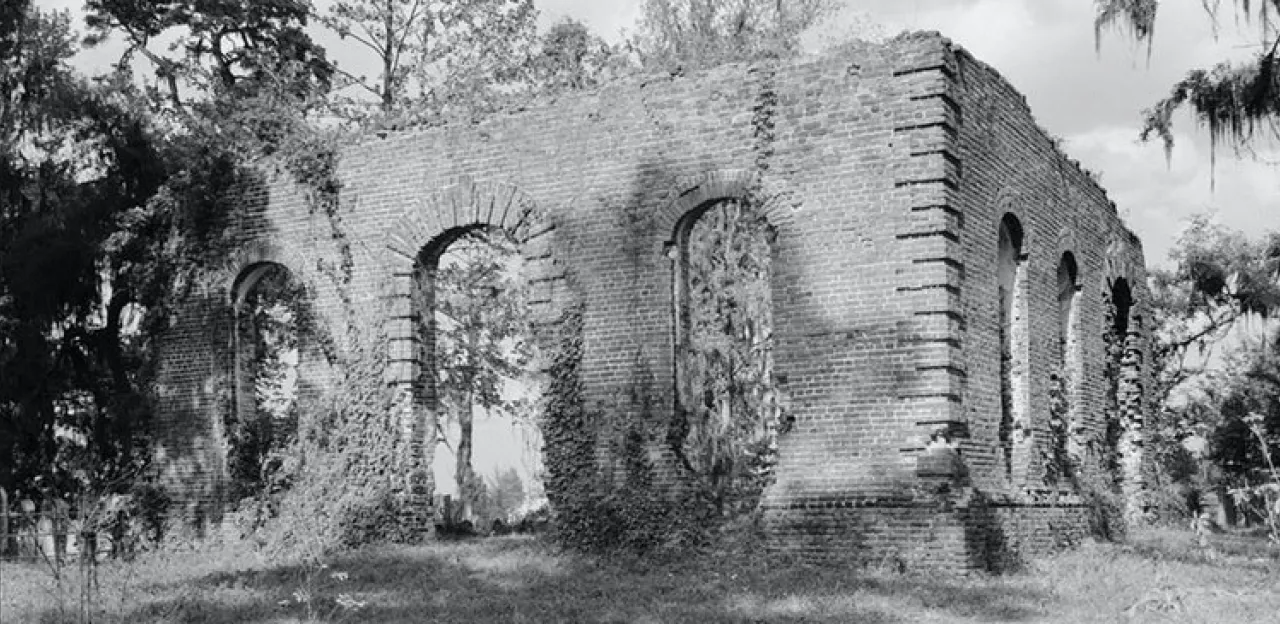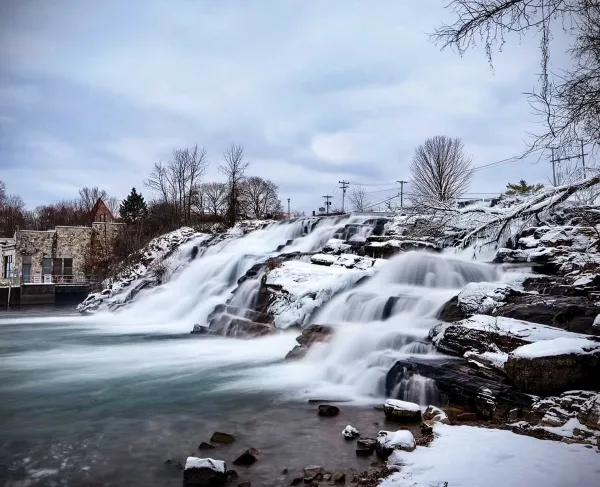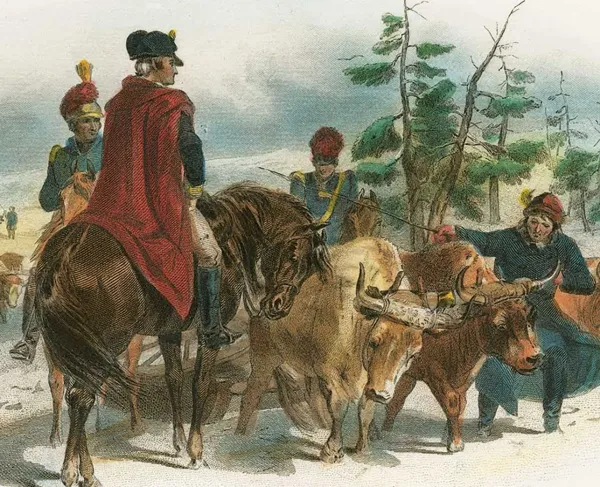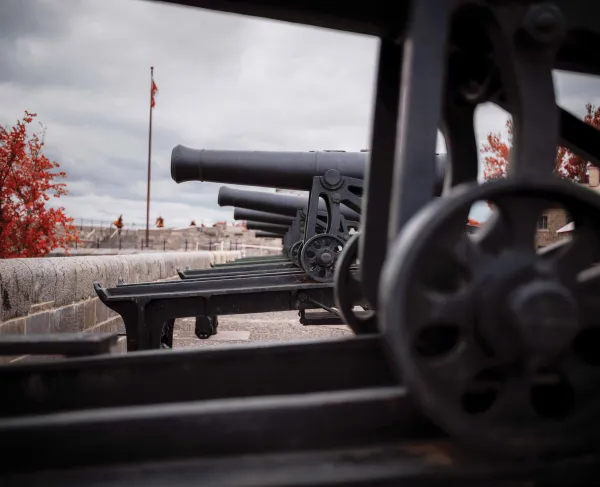Skirmish at Biggin Church

As British forces continued their efforts to hold vital supply posts to the north of Charleston, South Carolina, they faced efforts by the swarming bands of Continental detachments and patriot militia under the command of Brigadier General Thomas Sumter. British Lt. Colonel James Coates was commanding the eight companies (600 men) of the 19th Regiment of Foot at their position near Monck’s Corner, situated on the western bank of the Cooper River. The post consisted of the Fort Fair Lawn redoubt and Colleton mansion complex. Across Biggin Creek at the top of the Cooper River, the east post consisted primarily of the fortified, substantial brick St. John’s Church, commonly known as Biggin. This post commanded the Biggin Swamp causeway to Fort Fair Lawn, as well as the road to Wadboo Bridge two miles south. In July 1781, as was the case until the war’s end, this small intersection of creeks and swamps would see fierce combat between partisan fighters and regular army. As nineteenth century writer William Gilmore Simms would later say, the endurance of the partisan militia was superior to the regular troops of either army in the hot, sticky mid-summer known as the “Dog Days.”
General Sumter sent his calvary units patrolling several roads leading further into the Lowcountry, while he came assaulting with his infantry regiments in an effort to cut off British relief routes to Monck’s Corner. Lt. Colonel Henry Lee’s Legion had been sent to Dorchester, while Colonel Henry Hampton seized the bridge across Four Holes Swamp to stop any British reinforcements from their Orangeburg post. Colonel Hezekiah Maham rode down the east side of the Cooper River to destroy the bridge over Wadboo Creek so that the British would not be able to use it to receive supplies from Charleston. Destruction of this bridge would also hinder Coates’s movement. Colonels Peter Horry and Edward Lacey had reinforced Maham and set up their camp near the Wadboo Bridge. Maham destroyed two British schooners on the river. For whatever reason, the bridge was not disabled before they departed, and some of Coates' men repaired what damage was inflicted.
The following day, July 15, the British at Monck’s Corner were warned that the partisans would attack within twenty-four hours by two divisions of the enemy; plans were set to abandon the post in favor of Biggin Church to the east of Cooper River. As Coates pulled the bulk of his force eastward, British Lt. Stephen Jarvis and four South Carolina Royalists and six mounted Loyalist militia probed south towards Goose Creek to find any partisans. After leaving the camp, Jarvis’ patrol was hit by a heavy rain shower. The militia did not want to ride in the rain and left Jarvis. What remained of the patrol encountered a party of ten of Horry’s men. Jarvis returned with a prisoner who informed Coates of the American movements. Coates ordered Jarvis out again that same night to find Horry’s calvary. As he returned, Jarvis heard a detachment of Horry’s cavalry attacking the British pickets on Biggin’s Bridge. The partisans were driven off without much difficulty, and Horry's men moved southward.
At two in the afternoon on July 16, the British camp received intelligence that Horry’s men were at Wadboo Bridge and their was some disorder with their calvary horses. Sensing an opportunity, Major Thomas Fraser and around 150 South Carolina Royalists were sent to ride to the bridge and attack Horry, while the 19th Regiment would follow on foot. About 5:00pm, Fraser’s dragoons struck Horry’s camp. The Americans, caught by surprise while seated for dinner, quickly rallied and counterattacked. Col. Lacey’s mounted riflemen drove Fraser’s dragoons back with minor losses. Lt. Jarvis led a charge of British troop which was soon surrounded by Horry’s calvary. Jarvis extricated himself, yelling to his men to retreat back out of the trap. The 19th Regiment artillery arrived on scene with one or two field howitzers that stopped Horry’s attack. Sumter wrote that Horry’s men had “killed some and took away two subs and eight dragoons.” One of the prisoners was discovered to be a deserter from the patriot militia. Sumter had him executed the next morning. Horry withdrew to Sumter’s main body while Coates condensed his men in and around the Biggin Church complex, which the British had surrounded with abatis. Instead of pursuing, Sumter mistakenly thought Coates would soon march out to meet him; the general held his men in line for battle and camped not far from the church.
The South Carolina Royalists’ skirmish had been a delaying decoy. Realizing he could be soon surrounded, Coates loaded up a small portion of his supplies for his mobile force. He placed the bulk of his stores of food and ammunition inside the large church. Then in the middle of the night, the British torched it to keep their supplies from Sumter. While the church burned, the British forces raced down through the Wadboo Creek region to cross the Cooper River at Strawberry Ferry. In the meantime, the Americans could see the blaze from their camp and swiftly followed the towering embers. By the time they reached the church, it was too late to salvage the stores. Upon pursuit, they further discovered that Coates had disabled the Wadboo Bridge in his escape. Coates retrograded his infantry force down the road 17 miles toward Quinby Creek Bridge closer to Charleston. The British tried to keep just ahead of the Americans in what became a two-day chase and running fight all the way to Shubrick’s Plantation on Quinby Creek.
Following the British abandonment, the church was soon rebuilt, and remained active until it once again fell to fire sometime late in the nineteenth century. Today, the site of Biggin Church is one of the region’s most recognized relics. It can be found just east of Monck’s Corner off of State Highway 402. The two standing walls and cemetery are visible from the road. Though burnt walls are all that remain, its location gives clues to how vital existing buildings of the day were to both American and British armies in need of safe housing for supplies and soldiers. In a partisan war that became a war of posts, the church remains a marker of the sacrifices made during the American Revolution.






